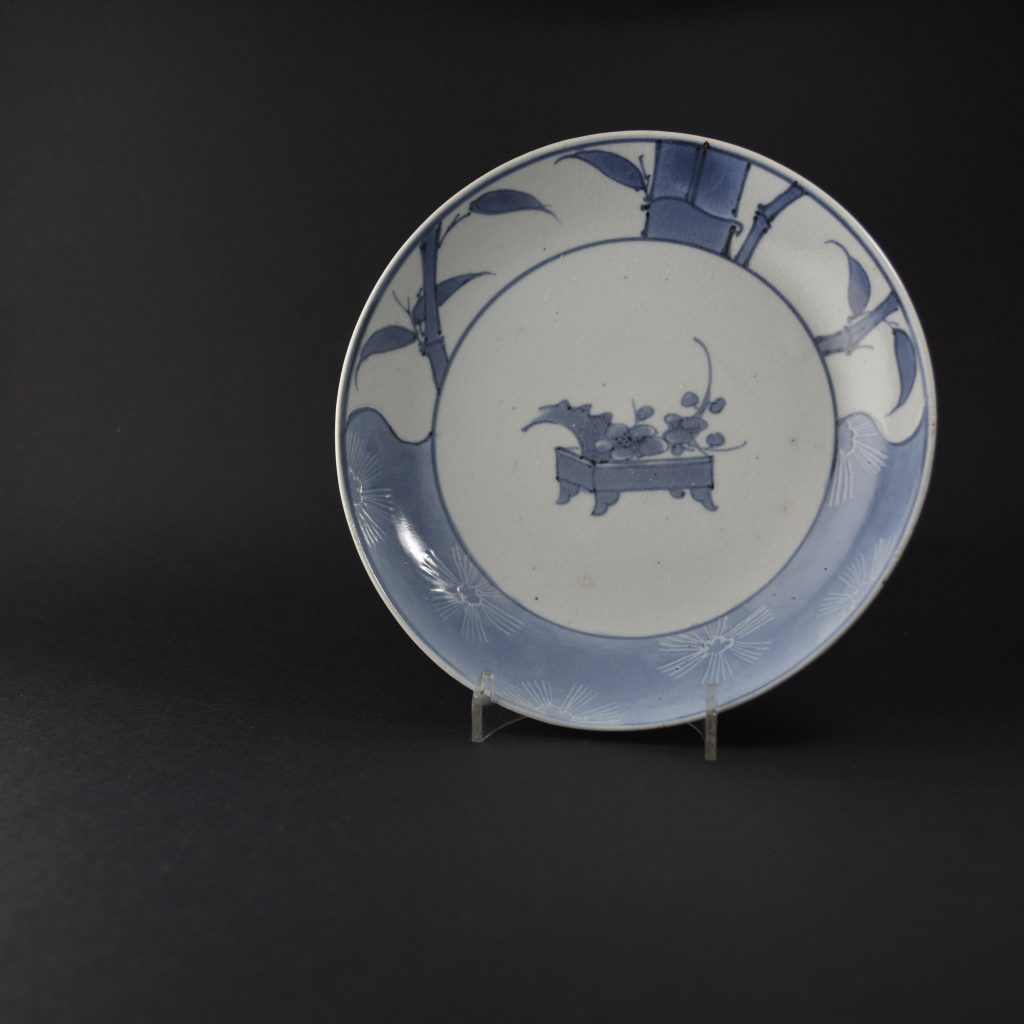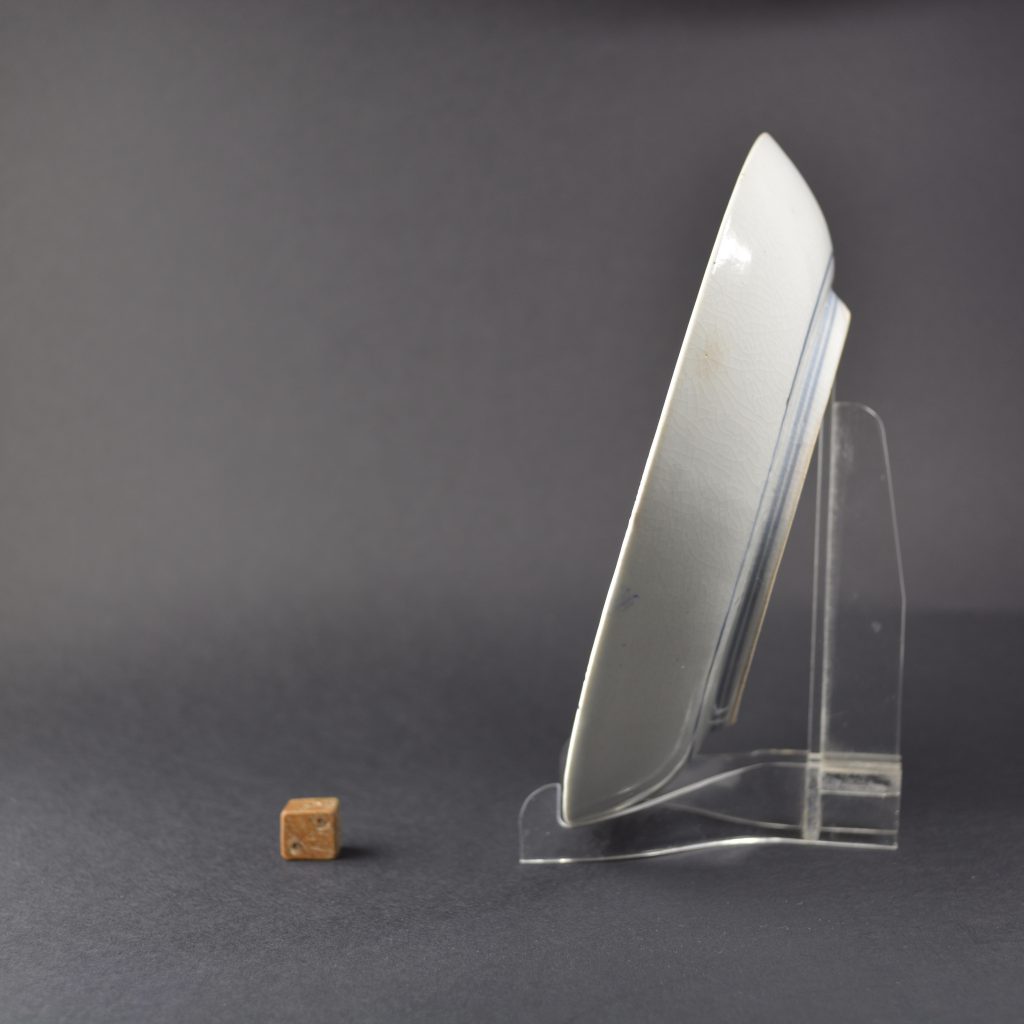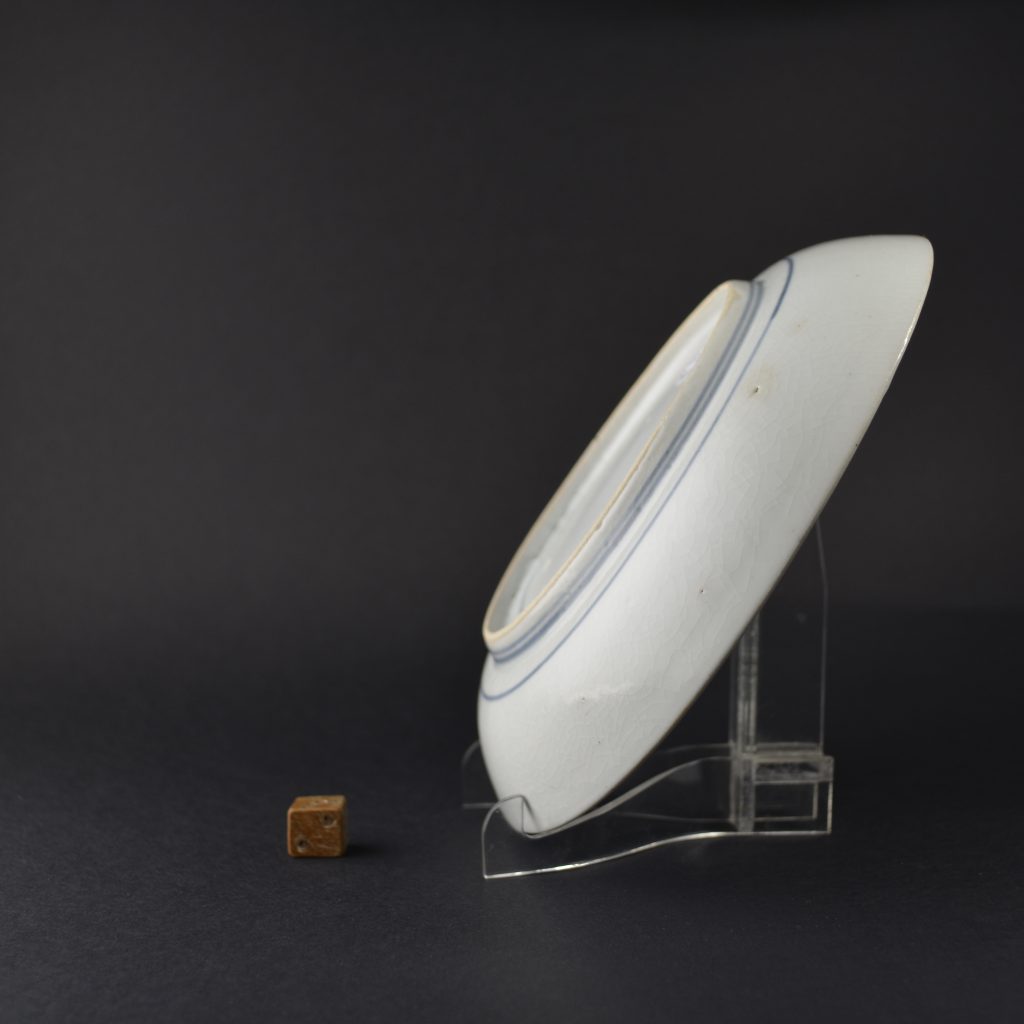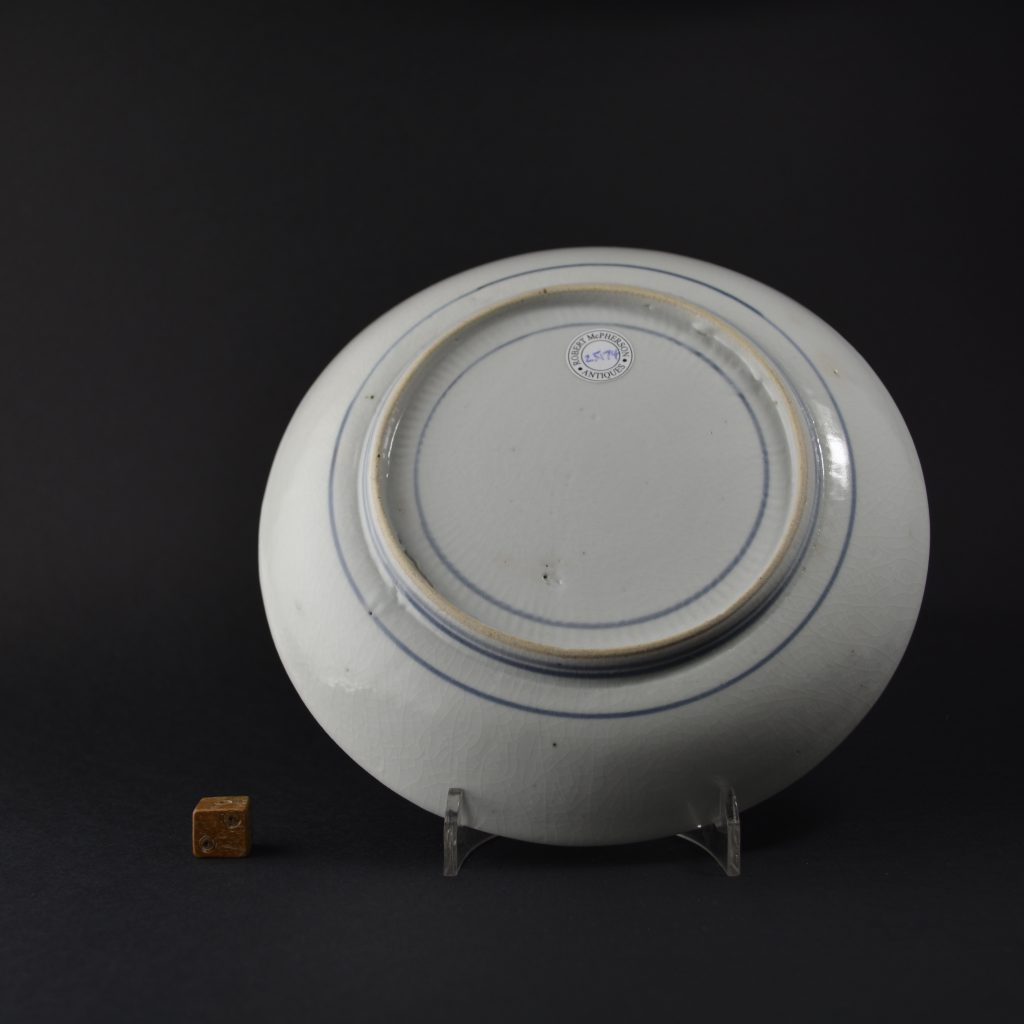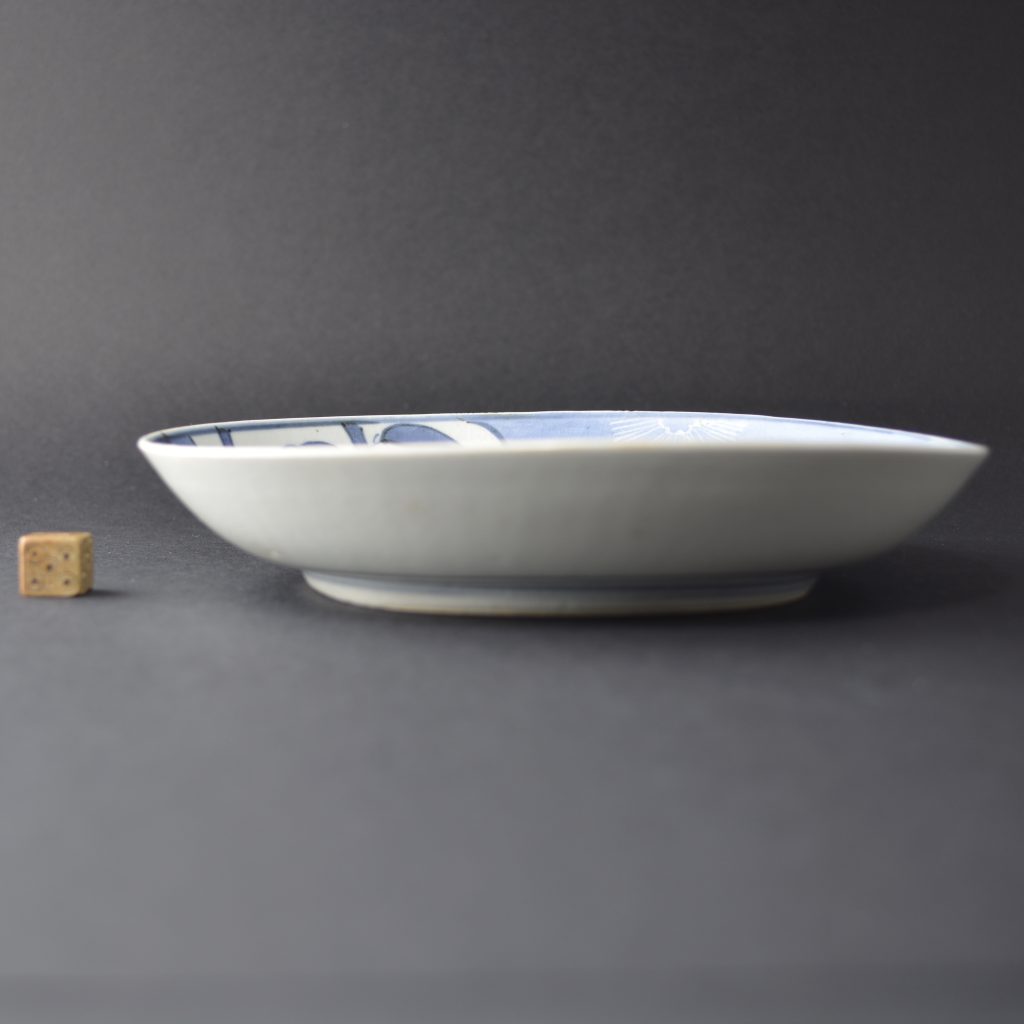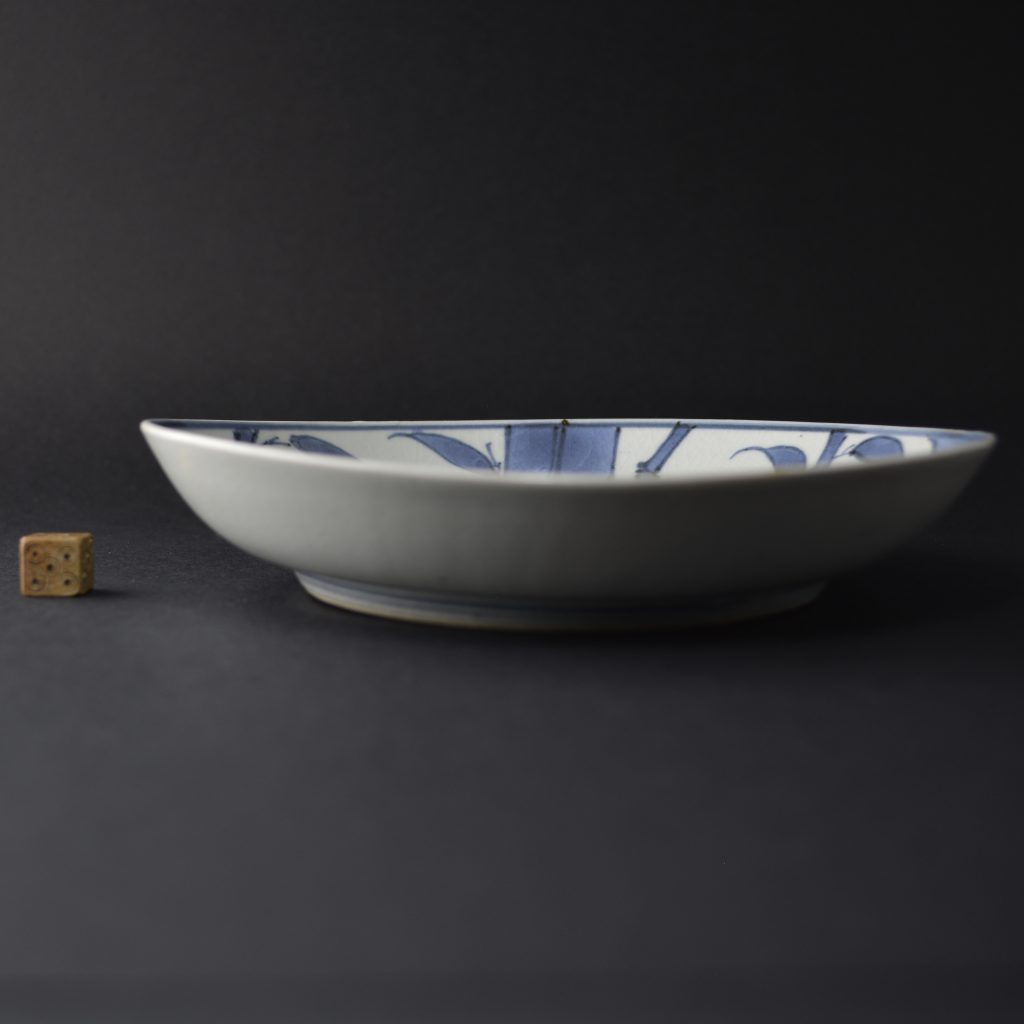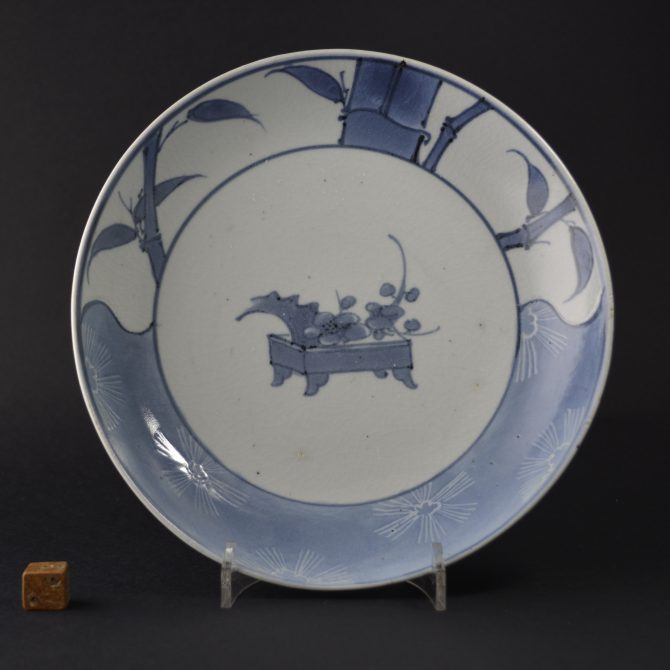
A 17th Century Japanese Porcelain Saucer Shaped Dish
An early Japanese porcelain saucer-shaped dish, Arita kilns c.1655-1670. The well is decorated with a rectangular plant pot with a flowering prunus and a gnarled branch. The well is constructed of two sections, one with a section throw bamboo growth, the other section with a panel in blue with, perhaps starbursts, in white using Sumihajiki (wax resist). This rather unevenly shaped dish is decorated in a pale bluey-grey cobalt which has a slight violet hue.
SOLD
- Condition
- In excellent condition, the glaze has fine crazing, a very small stain to the back.
- Size
- Diameter : 17.2cm (6 3/4 inches)
- Provenance
- N/A
- Stock number
- 25174
- References
- For a related Japanese porcelain dish see : Complete Catalogue of Shibata Collection (Kyushu Ceramic Museum,2003) page 109, plate 0813.
Information
Sumihajiki :
This type of ceramic decoration appears in Japan just after the middle of the 17th century, although its origins are much earlier. The effect created is that of painted white lines cutting through blue, this is achieved using a wax resist type paint called `sumi` which protects the white porcelain from the cobalt blue over-painting. The `sumi` is burnt off during the firing to leaving white lines to contrast against the blue.
